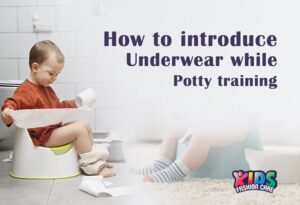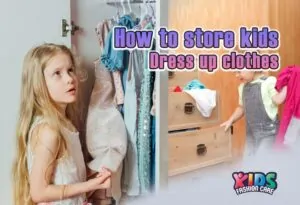The best fabrics for kids clothes combine softness, strength, and smart functionality—think temperature-regulating merino wool for winter, moisture-wicking bamboo for summer, and durable cotton-polyester blends for school wear. Parents should prioritize non-toxic, breathable materials with reinforced seams for rough play, plus easy-care features like wrinkle and shrink resistance. From flame-resistant pajamas to UPF-rated sun protection, the right fabric choices make all the difference in comfort and longevity.
Table of Contents
Kids’ clothing shopping is both a dream and a nightmare, wouldn’t you agree? When you find the right dress or outfit for your kid, you feel a sense of accomplishment, but when you can’t, you become frustrated. Aside from finding the right fit, the other important factor parents need to think about when shopping for kids’ clothing is fabric.
All parents think a lot about the best fabrics for kids’ clothes. The answer depends on whether you are looking for natural, synthetic, or blended fabrics. The best natural fabric is cotton, and the best synthetic is polyester.
Today, I will discuss the best choices for clothes fabric, natural and synthetic, and share when to pick what for different seasons. I will also discuss additional considerations parents need to consider.
Why Fabric Choice Matters for Kids’ Clothing
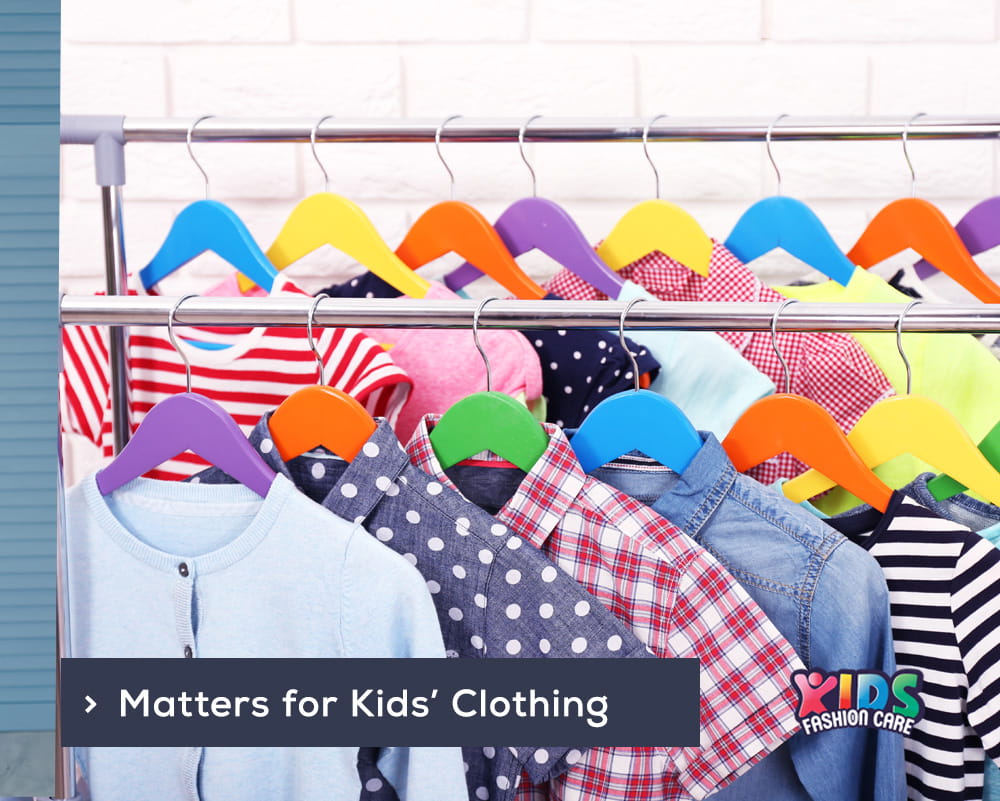
So why did I say fabric choice is just as important as fit? Because the choice will change just how comfortable your child feels wearing a certain outfit. There are other benefits to be enjoyed based on parents’ fabric choices. What are they? They are:
Comfort and Softness
When children are younger, their skin is softer and more delicate, so certain fabrics feel rougher to them. To minimize a child’s irritation, parents need to ensure they are picking the softest and most delicate fabric they can find. The American Academy of Pediatrics recommends soft, natural baby fabrics to minimize skin irritation and allow for proper air circulation.
Older kids will want to continue wearing softer fabric because they grew up on it or want to enjoy its comfort. Stiffer fabrics make it harder for kids to wear an outfit for too long, whereas softer fabric does the opposite.
Durability and Longevity
Kids’ clothing needs to be washed multiple times a week, so parents need to pick outfits made from durable fabrics. On average, a parent will wash their kids’ clothing two or three times to ensure it is safe for kids to wear. Multiple washing leads to clothes becoming worn and torn, which means they need to be replaced, which increases cost.
Twill weaves and jersey knits are special construction fabrics that can be washed multiple times. Because of their construction, the damage done to these fabrics is lessened. Knowing which fabric can handle more washing is quite important for parents.
Breathability and Temperature Regulation
Children’s bodies can’t accurately moderate their body temperature, which leads them to feel warm and cold more easily. To help regulate body temperature better, children need to wear more breathable clothing. The breathability level of clothes is determined by the fabrics used to make them.
Parents need to know which fabric is best for breathable kids’ clothes. Clothes with better moisture-wicking properties are also a plus, so parents should consider that as well.
Safety Considerations
Kids’ clothing doesn’t just have to be comfortable; it also needs to be safe to wear. There are strict guidelines on what kids’ clothing can be made from, and parents need to know which fabrics are acceptable.
Some regulations, such as fire safety, state that certain fabrics can be used to make clothing for kids. This is because these fabrics are either fire-resistant or non-flammable. Also, certain fabrics are treated with harsher chemicals, and people should avoid them for health reasons.
Easy Maintenance
Maintenance can be an issue for parents who often clean their kids’ clothing. Modern families have both parents working, so time is limited for other activities. Clothes with stain-resistant finishes, colorfast dyes, and wrinkle-resistant fabrics make life easier for such parents.
Parents should look for the best fabrics for kids’ clothes that are easier to maintain and can be machine-washed to save time. Understanding fabric care symbols and following manufacturer instructions helps preserve clothing quality wash after wash and makes clothes easier to care for.
Best Natural Fabrics for Kids’ Clothes
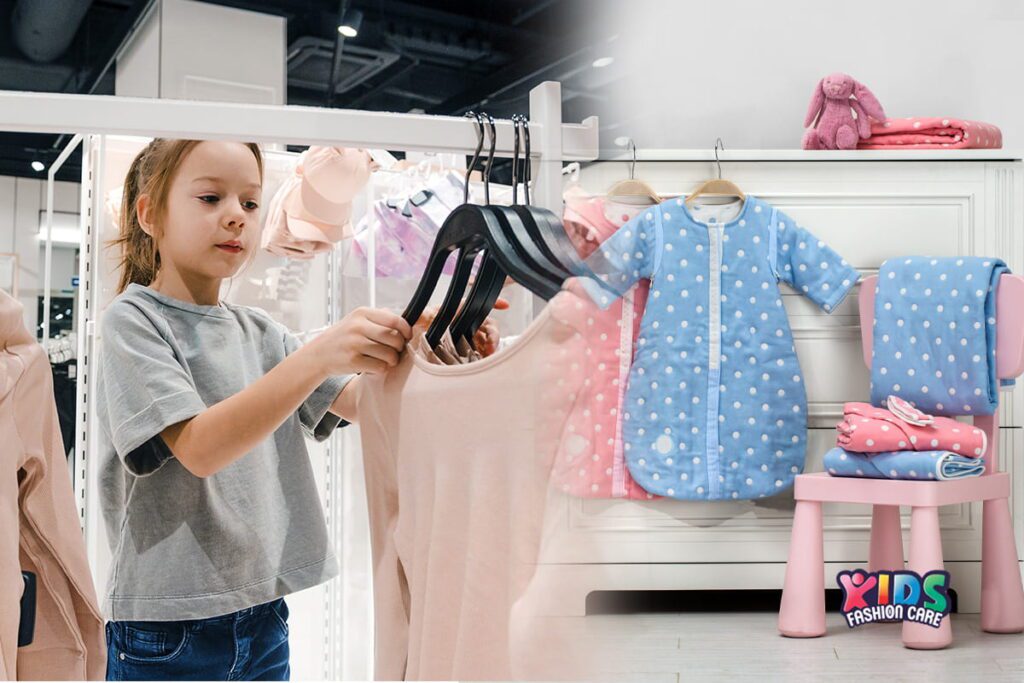
I will first review the natural fabric choices for kids’ clothes. These fabrics have natural properties that make them ideal for kids. They are also less treated with chemicals, making them far superior choices.
Cotton
The best natural fabric for kids’ clothing must be cotton. The fabric comes with natural breathability and softness, ensuring greater kids’ comfort. The fabric is ideal for kids with sensitive skin because of its natural feel and fit. My personal choice of natural cotton fabrics are:
- Organic Pima Cotton: This cotton is 35% longer in length, making it exceptionally soft yet durable.
- Supima® Cotton: It is a certified cotton grown in America known for its enhanced color retention.
- Turkish Cotton: Known worldwide for its luxurious towel-like absorbency, especially in kids’ sleepwear.
Organic Cotton
Naturally grown organic cotton is even better than the previous kind because it is pesticide-free. To be sure it’s authentic, you must check if it comes from a certified farm. This type of natural fabric also offers:
- GOTS Certification: It ensures that the cotton is sustainably grown and harvested.
- Better Absorbency: The clothing can absorb 27% more fluid, which is very important for parents with young kids.
- Hypoallergenic Properties: This leads to an 80% less chance of an allergic reaction from dermatitis.
Bamboo
This fabric has recently been getting a lot of buzz among parents because it is affordable even though it’s sustainable. To be sure you are buying the real thing, I recommend looking for the bamboo linen tag because there is chemically processed bamboo clothing for kids. This fabric has features and properties like:
- Natural Thermoregulation: This allows kids to feel around 2-3°F cooler in summer and warmer in winter.
- Antimicrobial Properties: This reduces the chance of bacteria growth by around 99.8%, according to certain FDA tests.
- UV Protection: Bamboo, even natural, fabric can block about 98% of UV rays.
Linen
Very few natural fabrics for kids’ clothes are as good as linen, especially during the summer. The fabric offers:
- Exceptional Breathability: Linen is said to be more than 30% airier than even organic cotton.
- Natural Wicking: The fabric can wick away 50% more moisture all on its own.
- Durability: Even after multiple washings, the fabric looks and feels fresh, like it is brand new.
Wool (Merino Wool)
Parents should pick Merino wool rather than look for common wool since it’s one of the best fabrics for kids’ clothes. The fabric can:
- Temperature Magic: Even if kids sweat or get wet, the fabric keeps them insulated for better temperature control.
- Odor Resistance: Kids won’t smell too bad even after playing for hours.
- Fire Safety: Merino wool is naturally fire-resistant and follows strict rules for manufacturing kids’ clothing without chemicals.
Best Synthetic & Blended Fabrics for Kids’ Clothes
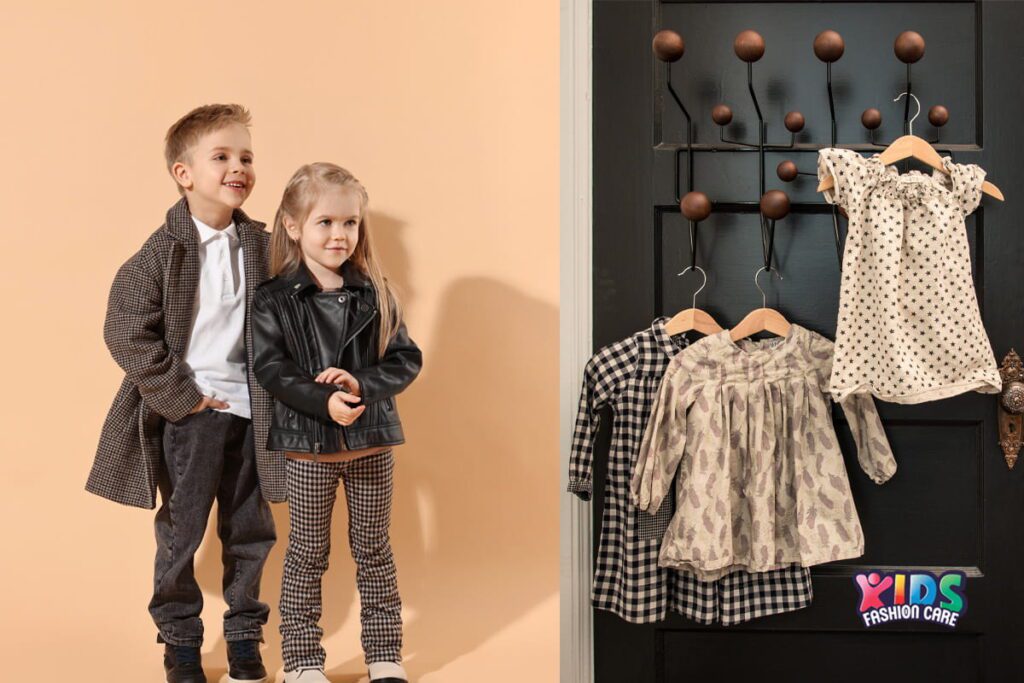
Natural fabrics are the best for kids’ clothing, but they are also expensive. Not all parents can afford to build their kid’s wardrobes with natural fabrics, so they must turn to synthetic or blended fabrics. There are bad choices when it comes to synthetic fabrics, but also good ones. Here are my suggestions for the best synthetic or blended fabrics for kids’ clothes you can trust.
Polyester
Polyester is the most common synthetic fabric, and it is also the best for kids’ clothing. This fabric has gone through much change, and the modern version of it is more than just stretchy. It now has more features, making it a reliable choice for parents looking for more affordable yet quality clothing. Some of its features are:
- Moisture-Wicking: The new polyester version has an advanced microchannel, which wicks moisture 50% faster.
- Eco Options: Recycled polyester or rPET is made from plastic bottles, thus making it a quality and sustainable choice.
- Anti-Odor: Polyester treated with silver ions stops bacteria, thus reducing bad odors.
Nylon
Another common pick from the synthetic and blend fabric options is nylon. Fabric nylon differs from the nylon ropes you see in construction, so please don’t mix the two. While different, there is a bit that’s common between the two. For example:
- Abrasion Resistance: Nylon fabrics are about 10 times more durable than cotton fabrics.
- Quick-Dry: The extra durability also translates to the fabric drying about 33% faster.
- Colorfastness: This fabric can be machine washed over 100 times and retain its color vibrancy.
Spandex (Lycra/Elastane)
No fabric is as stretchy as spandex, so it’s one of the best fabrics for kids, especially those who are quite active. The elasticity of spandex allows it to take a beating and still work perfectly. Some of its other features are:
- Shape Memory: The fabric can keep its shape and return to its base shape even after putting under stress.
- Durability: The stretchiness makes the fabric last well past 200 machine washes.
- Adaptive Clothing: The ability to retain its shape or take on a new one makes clothes made from it ideal for kids with special needs.
Fleece
Fleece is a woolly fabric that’s commonly seen in kids’ clothing. The reason why it’s one of the best fabrics for children’s clothing is because of how comfortable it feels. Modern fleece manufacturing technologies have developed various types that make fleece even more attractive for parents. Some of these types are:
- Polar Fleece: It’s a type of fleece that is 300% warmer than wool while still being lightweight.
- Eco-Fleece: A more sustainable fleece that’s made from recycled plastic bottles.
- Anti-Pill: More of a feature where it prevents fuzz balls thanks to an exceptional finish.
Microfiber
The last choice for the best synthetic or blend fabric for kids’ clothes is microfiber. You might wonder if I am talking about the cloth used for cleaning glasses. I am, but rather than a cloth, I am talking more about the fabric it’s made from. This high-tech fabric has some interesting features like:
- Stain Resistance: Rather than absorbing the fabric, it beads up liquid.
- Ultra-Lightweight: Super lightweight, around 50% cotton by weight.
- Wind Resistance: This fabric does an excellent job of blocking chilling wind while keeping the clothes breathable.
Seasonal Fabric Guide for Kids’ Clothing

While I did go over the best fabrics for kids’ clothes, I still need to remind parents like you that seasonal consideration is very important. Parents must choose different fabrics for their kid’s comfort depending on the season. Here are some suggestions so that you don’t have too much difficulty.
Summer Fabrics
For the best experience for kids, parents must consider fabrics that keep them cool and wick away sweat while playing. My top recommendations would be linen, bamboo-cotton blend, and UPF-rated clothing. These fabrics provide strategic airflow for optimal cooling effect, sun protection, and better moisture-wicking properties.
Winter Fabrics
Now, for colder months in the winter, parents need to pick fabrics opposite of summer ones. It’s all about keeping kids warm and protecting them from chilly winds. My suggestions are wool, fleece, or a blend with thermal features. These fabrics will provide warmth while being lightweight, keep your kids insulated, and still allow for some airflow.
Related: What Should You Wear for Winter Clothing? A Complete Guide
Transitional (Spring/Fall) Fabrics
Spring and fall have little temperature change, so there isn’t a need to pick anything too specific. But I will still recommend something lightweight and with breathability and comfort. Cotton linen or polyester are great choices as transitional fabrics.
Special Considerations for Baby Clothes
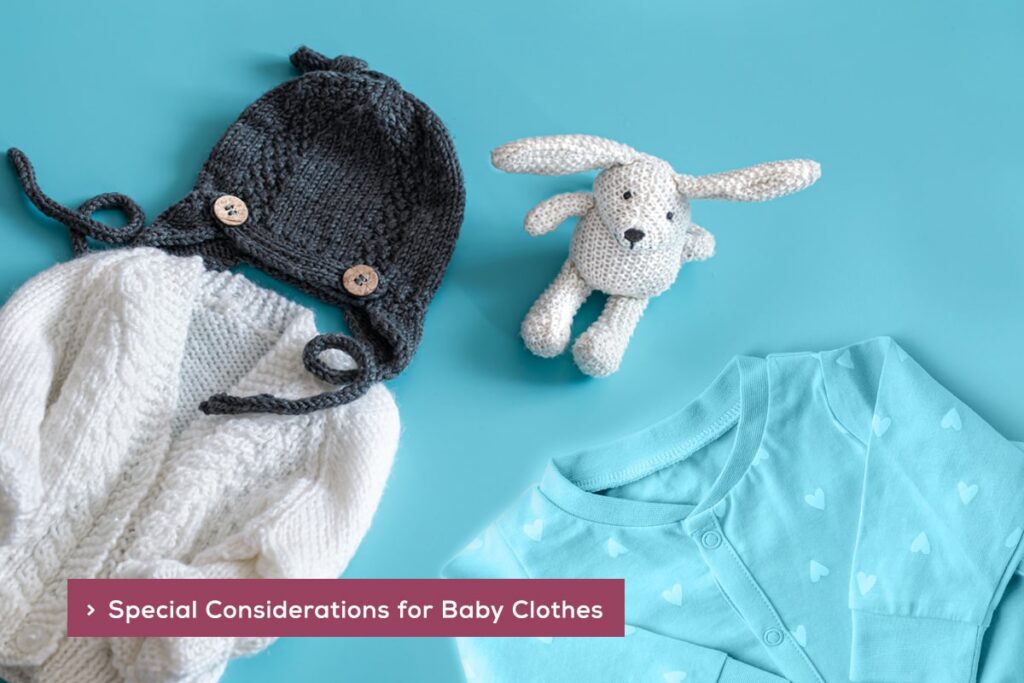
Not all kids are the same, so their clothing tastes will always differ. This is especially true for kids with special needs. Parents need to be extra careful when picking clothes for such kids since kids like them won’t like to wear certain fabrics.
Newborn-Friendly Fabrics
Newborns are especially vulnerable, so parents need to be careful when picking certain fabrics. They should choose fabrics that:
- Don’t chafe: Soft fabrics are the best for newborns because they don’t chafe or irritate the skin. Cotton or fleece are excellent choices for newborns.
- Protects the neck: Newborns get cold fast, so their body needs to be appropriately covered for better temperature regulation. Fabrics like spandex or wool will provide warmth while covering the neckline well.
- Are diaper-friendly: Certain fabric blends come with stretchy and moisture-absorbing, making them quite diaper-friendly.
Sleepwear Safety
Kids have a really hard time falling asleep. No matter how much you rock them or sing to them if they don’t feel comfortable, they won’t sleep. That’s why kids who have a hard time sleeping will wear comfortable clothes that make them sleepy. A snug-fitting cotton onesie works well to improve kids’ sleep.
Clothes with a minimum 250 CFM air flow are also ideal for helping kids sleep more easily. I suggest cotton, bamboo, linen, or other natural fabrics for sleepwear; synthetic fabrics don’t work that well.
Related: How to Dress a Newborn to Sleep: A Guide for New Parents
How to Care for Kids’ Clothes Based on Fabric Type
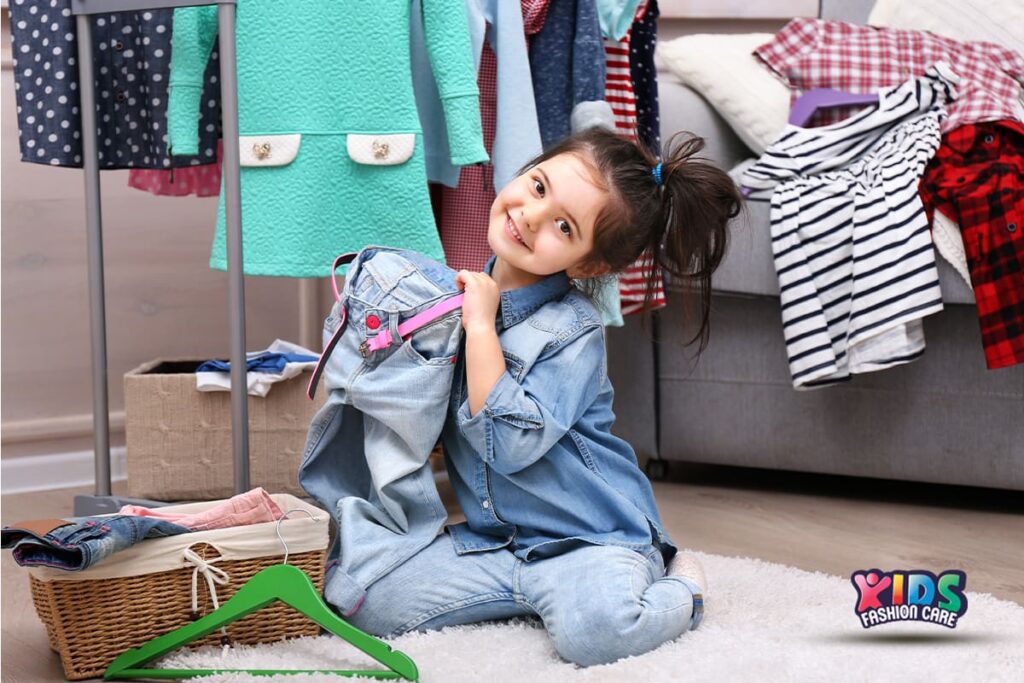
So you picked out outfits made from the best fabrics for kids’ clothes, but how do you ensure they last? There are ways to ensure you care for your kids’ clothes and make them last until they outgrow them. Here are some of them to help you:
Washing and Drying Tips
Different fabrics need to be washed and dried differently to last a long time. For example, cotton must be washed with cold water and dried by air to ensure it isn’t dried. On the other hand, synthetic clothes must be washed in cold weather, but they can be machine-dried at a machine-dried temperature.
But I suggest using cold water for washing and air drying all fabrics for kids’ clothes because they are all made to be more delicate. So please don’t take any chances and care for them properly. If you aren’t sure how to wash or dry certain clothes, check the labels and follow them accordingly.
Stain Removal Guide
Stains come in all colors and shapes, so removing them isn’t one method. If the stain is from a bodily fluid or food, you need to apply enzyme pretreatment to remove it more easily. Using some dish sod warm water is the best choice for oil stains. Grass stains can be easily removed with some alcohol solutions.
To be safe, use kid-friendly stain-removing solutions because chemical ones can harm or irritate kids’ skin. There are DIY solutions on the internet, so make one of those if you can’t find kid-friendly ones.
Storage Tips
When the weather changes, clothes need to be stored for the next season, but how you store them matters. Since you worked hard to pick the best fabrics for kids ‘ clothes, you should also store them properly.
Winter clothes should be vacuum sealed since they are so bulky, and there is always limited space for storage. Summer clothes need to be stored in bags that allow for airflow to keep them smelling fresh. When storing clothes, make sure to put some mothballs in, and the storage area isn’t too cramped to prevent bad odor.
Frequently Asked Questions (FAQs)
What is the best fabric for kids with eczema?
Organic cotton and bamboo are ideal—breathable, hypoallergenic, and free from harsh chemicals. Studies show that eczema flare-ups are reduced by 72% with these fabrics compared to synthetics. Always look for OEKO-TEX certification for guaranteed safety.
Are wrinkle-free fabrics safe for children?
Modern wrinkle-resistant treatments (like Nano-Tex) use formaldehyde-free technology and meet strict safety standards. Check for OEKO-TEX or CPSIA certification to ensure non-toxic finishes. These fabrics are safe when properly manufactured and certified.
Which fabrics are coolest for hot summer days?
Linen is the coolest (25°F cooler than skin), followed by bamboo and lightweight cotton. These fabrics allow maximum airflow and wick moisture efficiently. UPF-rated options add sun protection without trapping heat.
How can I tell if a fabric will shrink?
Check labels for “pre-shrunk” or “sanforized,” which means minimal shrinkage. Cotton shrinks 3-5%, wool up to 10%. Wash in cold water and air-dry to maintain size. Always follow care instructions.
Conclusion
There are so many choices for the best fabrics for kids’ clothes that getting confused is completely natural. Hopefully, my suggestion for the best ones helps you a little. Cotton and linen are the best natural fabrics. At the same time, polyester and fleece are the best synthetic or blended choices.
Whichever one you pick, make sure the clothes are the right fit and feel to ensure your kids wear them on their own. Seasonal considerations should be taken when picking to ensure time and money aren’t wasted. Special considerations for kids with needs will help you pick ones that will provide the best comfort and feel for such kids.




